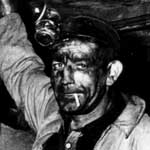John Wesley and North Somerset.
John Wesley was born on 28 June 1703 in Epworth, Lincolnshire. Along with his brother, Charles, he is largely credited as founding the Methodist movement. The Wesley brothers were well known Methodist preachers in old North Somerset, particularly through their work among the colliers.
Taking over from George Whitfield, John Wesley continued his evangelical work at open air sites such as Publow on the slopes of Priestdown, having been excluded by the clergyman from use of the parish church. Large numbers of people attended, attracted by the appeal of the message spelling out hope for the hereafter.
From 1739 until 1789, John Wesley was a regular visitor to many communities, helping them to establish Methodist Societies that enjoined a discipline of bible study, hymn singing and prayer. Other preachers from the Methodist New Room at the Horse Fair in Bristol lent support to the emerging groups of people who discovered a living Christianity, so different from the set and staid moralising Anglican services at which they were inactive observers.
Life for most working Somerset people entailed either working on the land as agricultural labourers or as colliers. The latter particularly was a dangerous and uncertain occupation, with little recreation beyond drinking alcohol and living a coarse existence.
The Wesleys brought a sense of self worth through their gospel of hope, encouraging sobriety and mutual respect, literacy through attending meetings, and an individual eloquence in men who became lay preachers in their own right. John Wesley’s unique genius was in organising his converts so that the Christian message was reinforced and refreshed through weekly group activity known as the class system. Here Methodists shared their spiritual progress.
Erecting their own Meeting Houses added to their sense of independence, although they were strongly encouraged to attend the parish church for communion. Licences obtained from the bishop of the diocese legitimised ‘dissenting’ preachers using these buildings; that is, men who had not been ordained in the Church of England permitted to take religious services without penalty of persecution.
Meeting Houses produced a spontaneity and release of spiritual emotion that held members together, reinforced by Watch Night services and revivalist schedules. Methodism gave a purpose and relevance to lives that otherwise were set in repetitive drudgery. Hard earned pence were put aside as regular contributions to pay for a visiting preacher’s fare. At a practical level, pamphlets on simple dress, general spiritual advice and home medicine were circulated. Children too, were not neglected but given their own classes.
Charles Wesley’s hymns and own dynamic preaching in the 1740’s created a powerful effect, helping to inspire and unite Somerset converts into a happy fellowship with each other. The eloquence of sermons transformed ordinary people’s minds and helped preserve social order, but would also be the basis for articulating grievances against employers in later years.
While there was disquiet and even resentment among some clergy and middle class parishioners, Methodism’s dogged persistence in the face of hostility won the day. Eventually, church membership suffered, as Meeting Houses became more widespread and independent, evolving into chapels with their own structure, separate training and administration.
Radstock Museum holds a collection of Wesleyana, some of which is on display.
